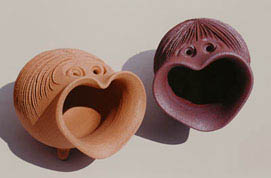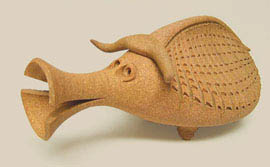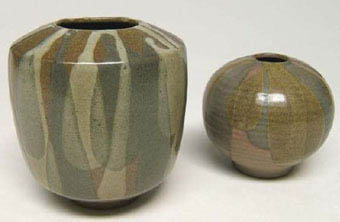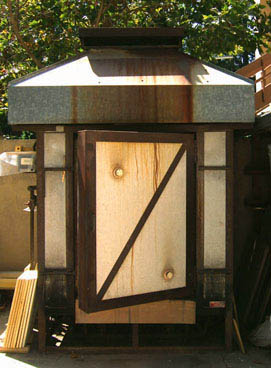How It's Done

|
|
Robert Maxwell has always worked with stoneware. Stoneware is a high-fire ware, second only to porcelain in terms of vitrification. Objects usually emerge from the bisque firing a light tan color but can be turned to rust (red-brown) by reduction (reducing the amount of oxygen in the kiln.) Maxwell generally favors the rust colored body, which he often leaves unglazed when producing his signature style animals.
|

|
|
His animals start life just like any other object on the potter's wheel. The difference is that midway in the process a typical vessel form morphs into an imaginary animal. The open top becomes the mouth of the beast and the base, with the addition of a tail, becomes the rear end. When the basic form is leather hard (usually after 24 hours) hand-carved texture and additions, like horns and tails, are added.
|

|
|
The first or bisque firing is performed at a relatively low temperature (about 1900 degrees F) to solidify the clay. Glazing is usually accomplished by either dipping the object into a bucket of liquid glaze or by spraying. If it's a vase or decorative item, Maxwell sometimes employs a unique pouring technique. In this method - a hallmark of his work - the colors overlap and, depending on which way the object is held, the direction of the flow may be up (gravity defying) or down on the completed form.
|

|
The final step in the process for the glazed items is firing them to cone 6 (2170 degrees F) in a large gas kiln. The temperature must go up and then gradually come back down before the finished products can be safely unloaded and inspected - always a highlight of the process. Pieces to be left unglazed must also endure the second firing to bring them to the proper stoneware temperature.
|